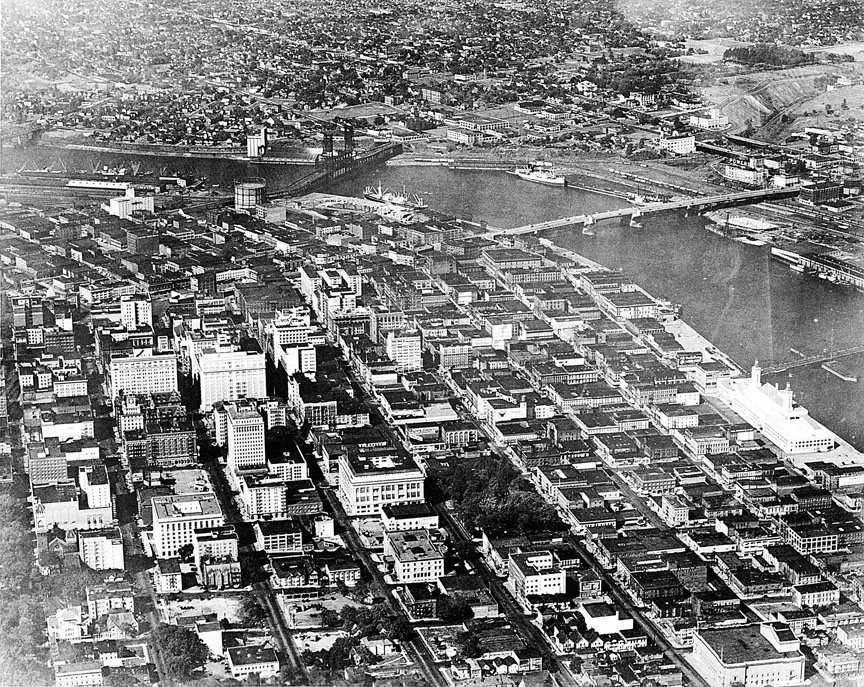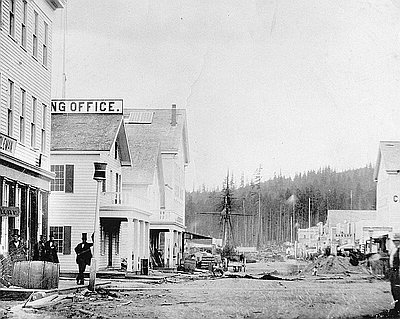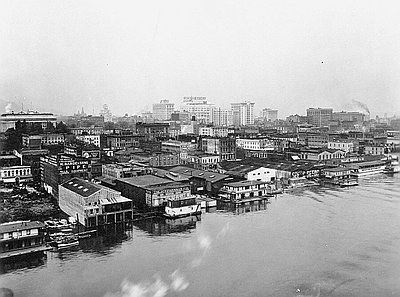In this 1933 photo, the newly constructed Portland Public Market, located along Southwest Front Street, stands out in the lower right-hand corner. During the 1920s, the existing public market at Southwest Fifth and Yamhill streets was centrally located and thriving, albeit highly congested. In 1933, the Portland Public Market was built to replace it. The land was owned by a number of powerful Portlanders who believed that the city would assume ownership and many of the costs associated with its construction.
The new market, which took a decade to plan, was extremely controversial. It was built despite petitions against it signed by 18,000 market users and 246 farmers who felt the new location would be inconvenient. Some correctly predicted that customers would still want to use the less formal outdoor market at Fifth and Yamhill and thereby create competition for the expensive new market along the waterfront. Furthermore, the Front Street location was opposed by city planners who supported the Bartholomew Plan, a $24,000 planning report commissioned by the city and county which proposed the area be used as part of a waterfront park.
One local merchant was eventually indicted for offering Mayor George Baker a bribe to vote against the Front Street market site, while Mayor Baker and City Commissioner Earl Riley were indicted for accepting bribes to vote in favor of the very same location. Finally, a prominent local attorney was also indicted for negotiating the bribes on the landowners. The incoming city administration declined to purchase the market, arguing that the previous commission had overstepped its authority.
The market was never, in fact, an operational public utility. Tenancy was always low, and the building was eventually sold to the Oregon Journal at a loss, before finally being torn down to make way for a public park.
Written by Trudy Flores, Sarah Griffith, © Oregon Historical Society. 2002.


